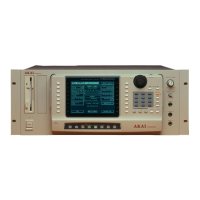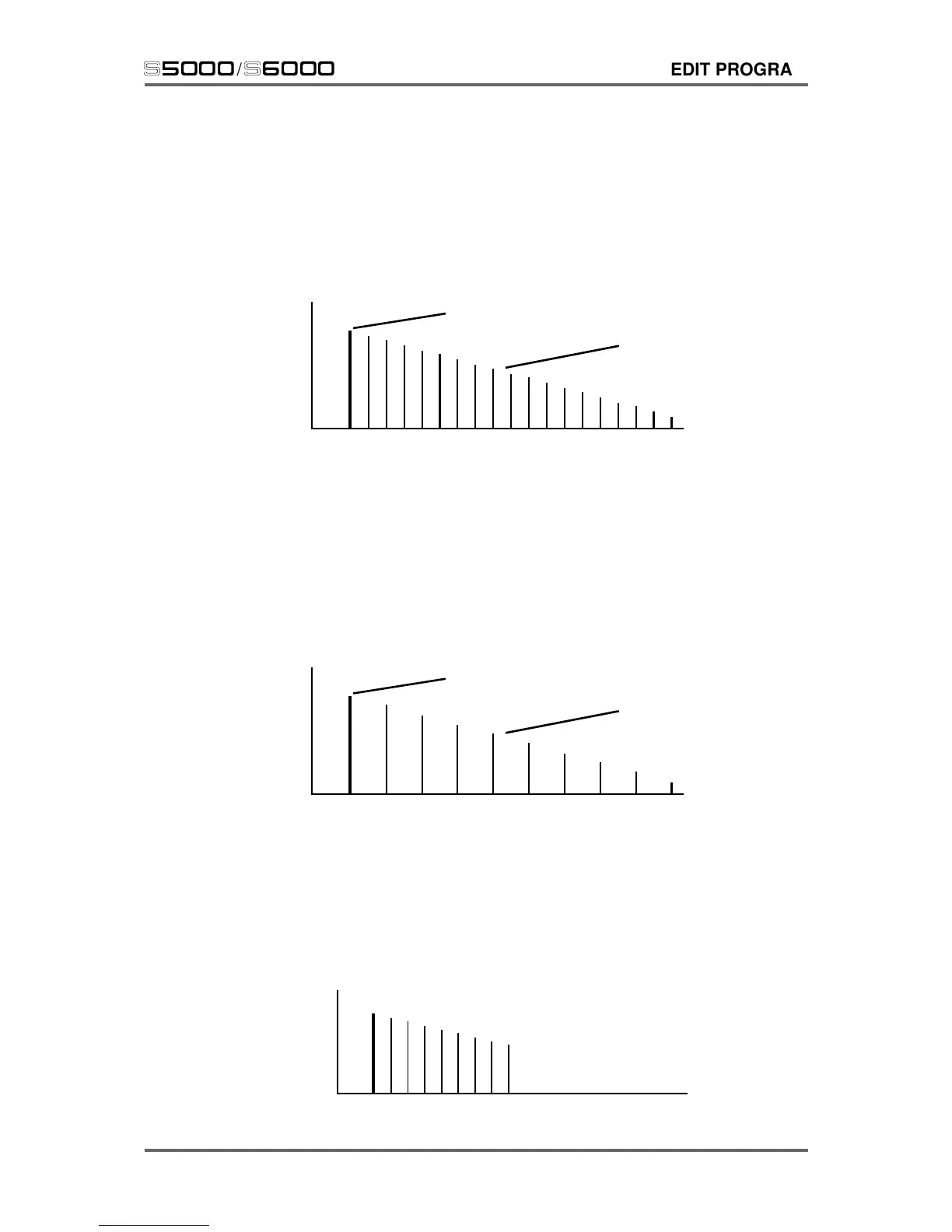Version 1.21 109
s5000
/
s6000
EDIT PROGRAM
These harmonics combine to create more complex waveforms or sounds and the rule of thumb is
that the brighter the sound, the more harmonics it has (and/or, they are louder in respect to the
fundamental frequency). By manipulating these harmonics with a filter, you can transform the tone
or
timbre
of a sound.
Another way of looking at a sound is shown below. A typical synthesiser sawtooth wave would look
something like this if analysed (a brass instrument or strings or any other strident sounding instrument
may look similar):
HARMONICS
FREQUENCY
L
E
V
E
L
FUNDAMENTAL
There is the FUNDAMENTAL (i.e. the pitch of the note being played) and there is the series of
harmonics or overtones. In the case of a sawtooth wave, the first harmonic is twice the pitch or
frequency of the fundamental, the next is three times, the next four, then five, six, etc.. Each
harmonic is proportionally lower in level. In other words, the sound contains an equal spread of
odd and even harmonics.
A ‘true’ square wave such as you’d find on any synth comprises only odd numbered harmonics
(i.e. the harmonics are 3, 5, 7, 9, etc. times the fundamental). E.g.:
HARMONICS
FREQUENCY
L
E
V
E
L
FUNDAMENTAL
This gives the characteristic ‘hollow’ sound of not only a synth square wave but also clarinet and
other woodwind and ‘pipe’ sounds.
Both of these sounds are bright because you can hear all their harmonics. If you remove some of
these harmonics, however, their tone will change. The following, for example, would sound duller
or more muted than the sawtooth wave shown at the top of the page:
FREQUENCY
L
E
V
E
L

